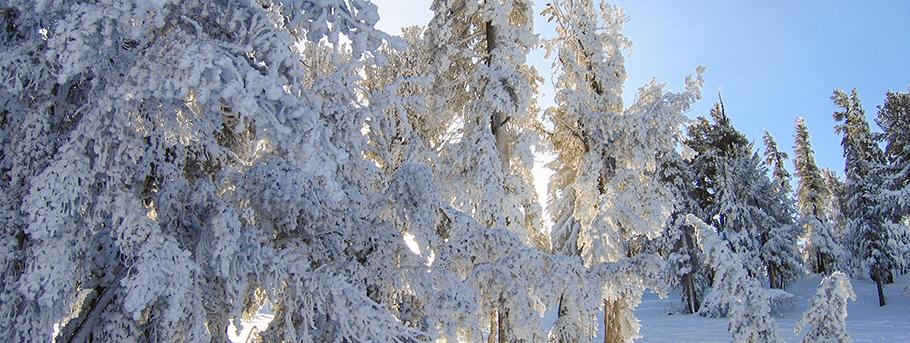 By Julie Regan
By Julie Regan
The recent glimpses of clear skies, frosted forests, and Lake Tahoe’s mesmerizing blue hues have a way of perfectly framing nature’s power and beauty. Amidst a series of no less than nine extreme storm systems, we find ourselves simultaneously grateful for the abundance of snow and belittled by the size of the berms.
The need to double down on the Tahoe Region’s climate action strategies could not be more urgent. Increasingly extreme weather events will continue to hit the Sierra – from mega droughts to atmospheric rivers. These and other impacts of climate change may have you questioning what strategies are in place to conserve Tahoe’s beloved communities and environment into the future? From modernizing land use policies to improving water quality and treating our overstocked forests, many of the solutions for tomorrow are built on Tahoe’s complicated legacy.
As America’s national parks began taking shape more than 100 years ago, a Lake Tahoe park never came to be, forever changing the course of conservation in the region. Many people and communities are now a part of the basin’s ecosystem. Vibrant communities and quaint neighborhoods are tucked into the nooks and crannies of the watershed. Successful conservation of Lake Tahoe relies partly on the way these developed areas and a limited amount of new growth is managed.
It is true that leaders in the mid-20th century were calling for a city the size of San Francisco here in the Tahoe Basin. But more than 50 years ago, the states of Nevada and California came together to put forward a more thoughtful approach still in effect today that seeks to balance the needs of the community with Lake Tahoe’s protection and restoration.
Under one of the nation’s first bi-state planning compacts, the Tahoe Regional Planning Agency (TRPA) prohibited development on sensitive lands, set caps on new development, and continues to work with local government partners to allocate a limited amount of new development through a performance-based system. TRPA also uses mitigation funds to support public land acquisitions to further reduce the development potential of the basin. Over time, state and federal agencies have acquired more than 9,000 vacant parcels, many of them urban lots and sensitive lands.
Under the growth management system, Lake Tahoe is nearing buildout, the point at which the development rights allocated by the Regional Plan are all distributed. Just 10 percent or less of potential development rights remain, and incentives in the Regional Plan are leading to overall reductions in development. These successful programs, however, have contributed to a housing shortage which is plaguing our communities.
Even though TRPA and local jurisdictions carefully manage growth in Tahoe, our environment and communities face tough issues. The demand for up-scale development and second homes is making it difficult to attract investment in workforce housing. Major transportation improvements are needed regionally to reduce reliance on car travel, especially during peak periods and near recreation hotspots. And while we have seen significant water quality investments through environmental redevelopment in recent years, some of Tahoe’s aging town centers haven’t seen new projects come forward in decades.
TRPA is answering the mandate of the bi-state compact by continuing to build trust and strengthen partnerships to catalyze new investment within the established growth caps. Working with stakeholders on the Tahoe Living Working Group, we are bringing additional funding to the basin and modernizing policies to deliver more deed-restricted workforce housing. Agency team members are working with local government partners and project applicants to continue Tahoe’s conservation success story. By revitalizing communities, we are advancing the triple bottom line in which Lake Tahoe, the community, and the economy all together win.
I also need to impart sad news. Long-time Lake Tahoe planner Gary Midkiff passed away recently. Years ago, Gary held an executive role at TRPA and had since served as a land use consultant specializing in Tahoe. He was incredibly resilient and an advocate for Lake Tahoe and will be missed.
Last but not least, I want to give special thanks to the road crews, plow drivers, law enforcement, avalanche controllers, and maintenance staff who have been working night and day to keep us safe and our communities operating. We are grateful for your persistent and tireless work. We are a strong and resilient community, especially when we work together.

